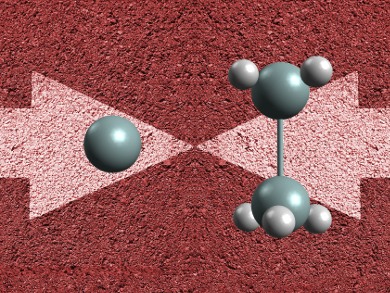Carbon and silicon are members of the same group in the periodic table. Nevertheless, their compounds are often very different due to the propensity of carbon to form double and triple bonds. The energy surfaces for both C2H2 and Si2H2 have been well explored, both in experiments and computationally. The same is true for C3H4, but not for its silicon analogue Si3H4, which had not been experimentally identified so far.
Ralf I. Kaiser, University of Hawai’i at Manoa, Honolulu, USA, Agnes H. H. Chang, National Dong Hwa University, Hualien, Taiwan, and colleagues have investigated the reaction of atomic silicon with the disilane Si2H6 in a crossed molecular beam machine. The team produced one beam of silicon atoms by shooting a laser at a silicon target and a second beam containing the disilane. The two beams were then crossed with a collision energy of 21.0 kJ/mol.
The products of the collision were detected by a time-of-flight (TOF) detector. The results point to the formation of one or more Si3H4 isomers, along with H2 as a byproduct. Quantum chemical calculations showed that all reasonable products are either cylic or hydrogen-bridged. According to the researchers, these results could be a step towards the gas phase synthesis of other elusive organosilicon molecules.
- Gas-Phase Synthesis of the Elusive Trisilicontetrahydride Species (Si3H4),
Tao Yang, Beni B. Dangi, Aaron M. Thomas, Ralf I. Kaiser, Bing-Jian Sun, Monika Staś, Agnes H. H. Chang,
J. Phys. Chem. Lett. 2016.
DOI: 10.1021/acs.jpclett.6b02710




